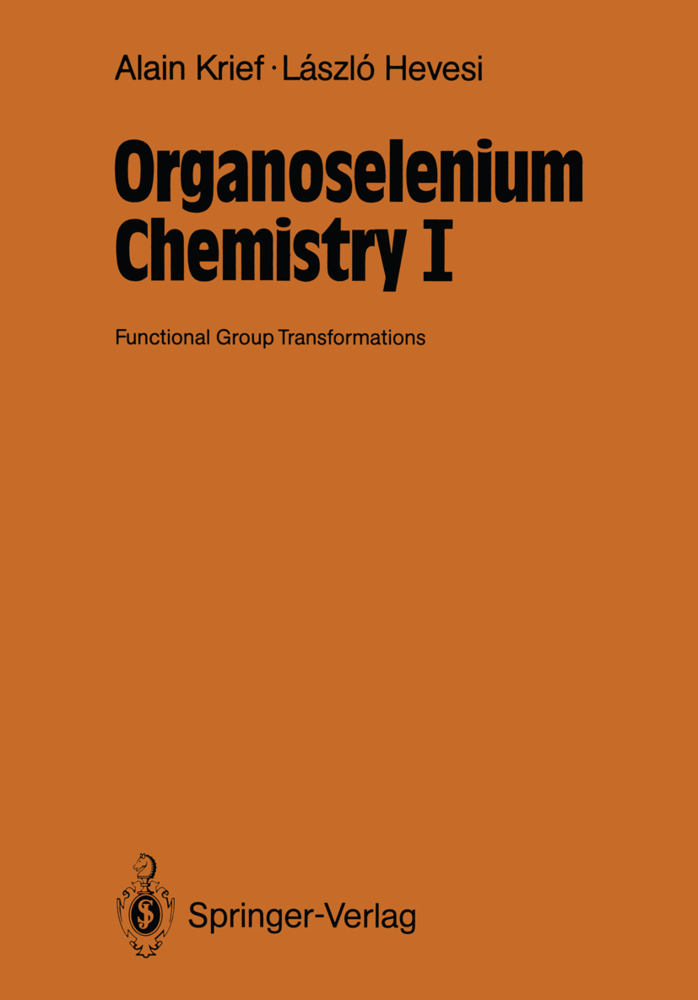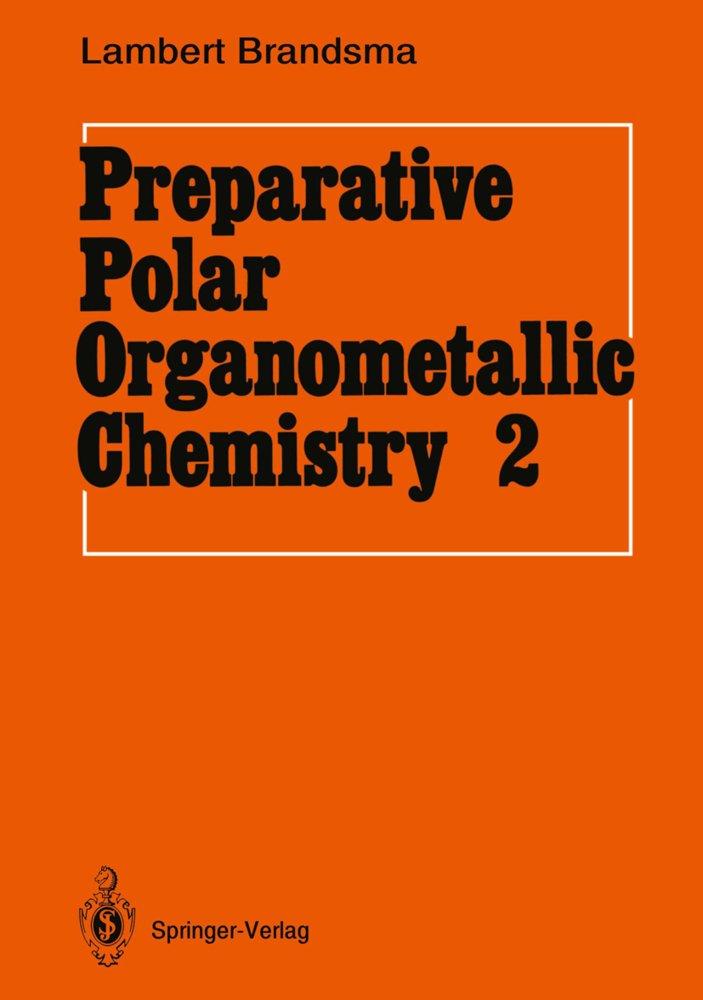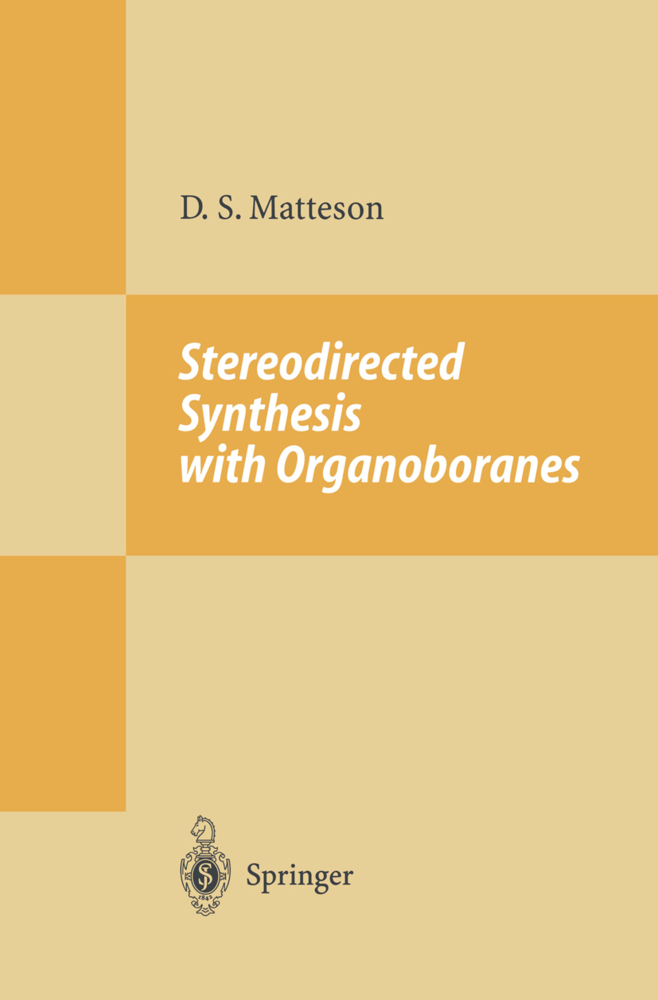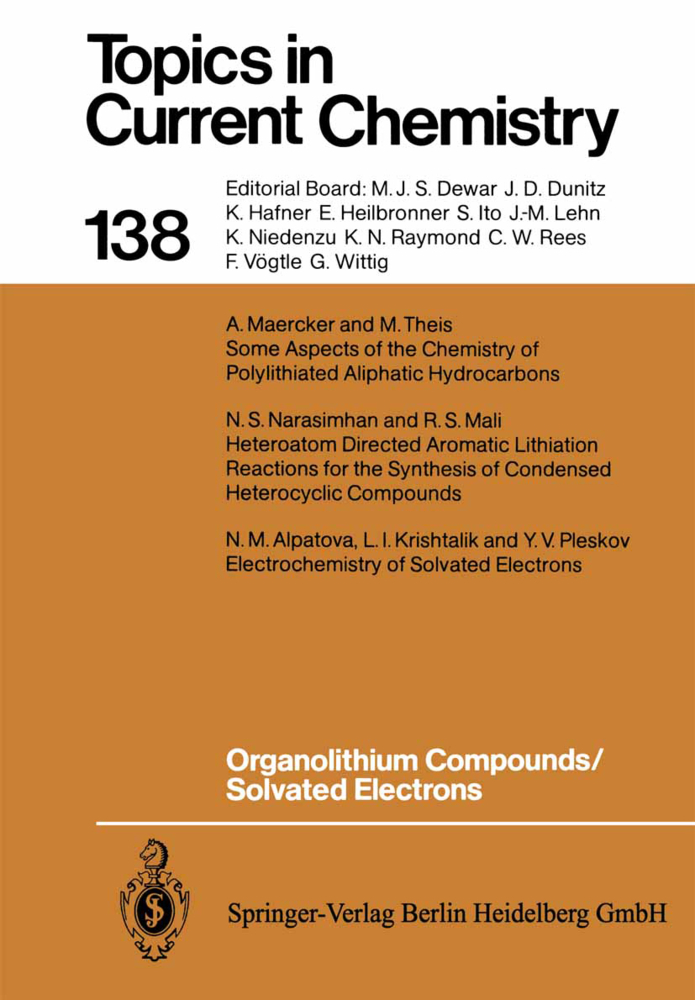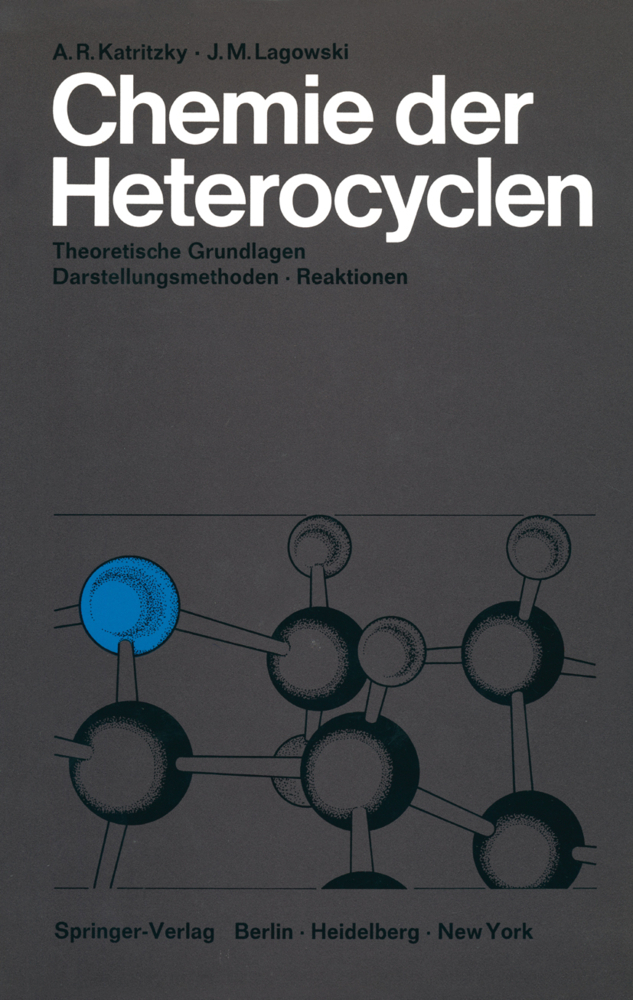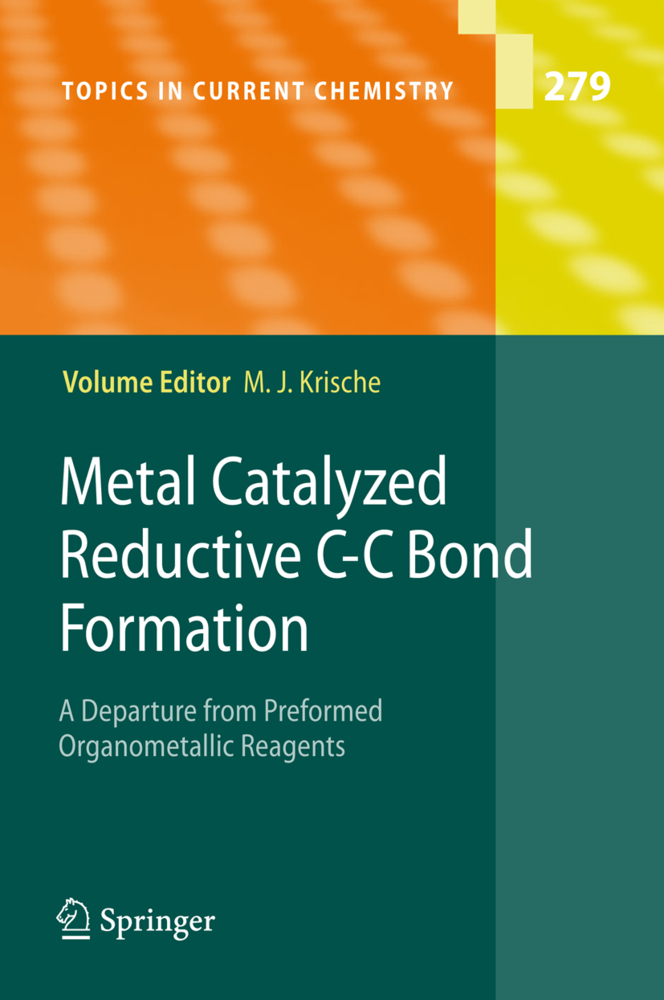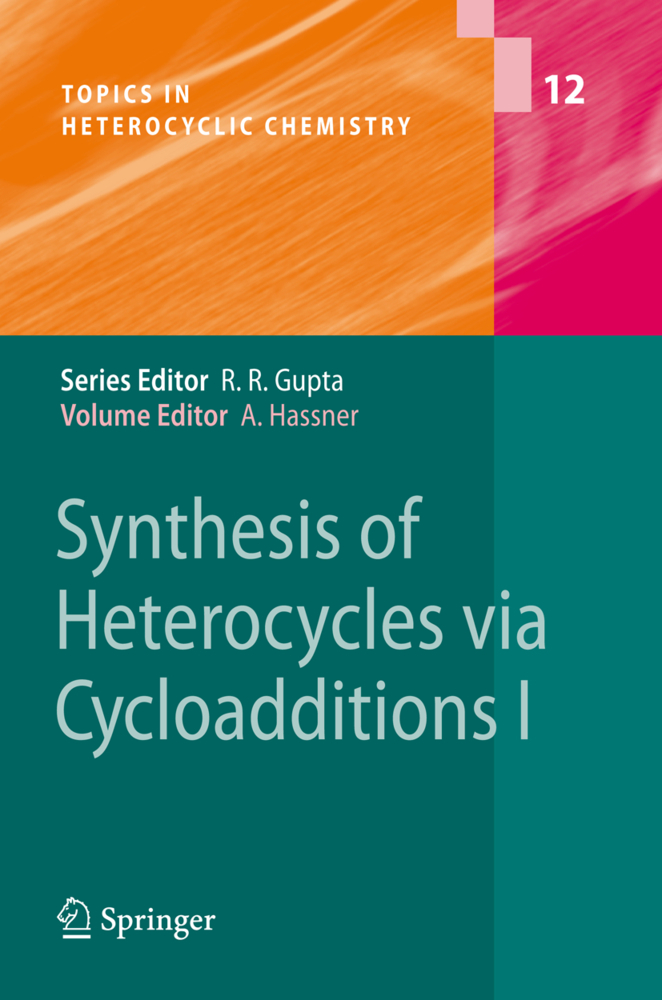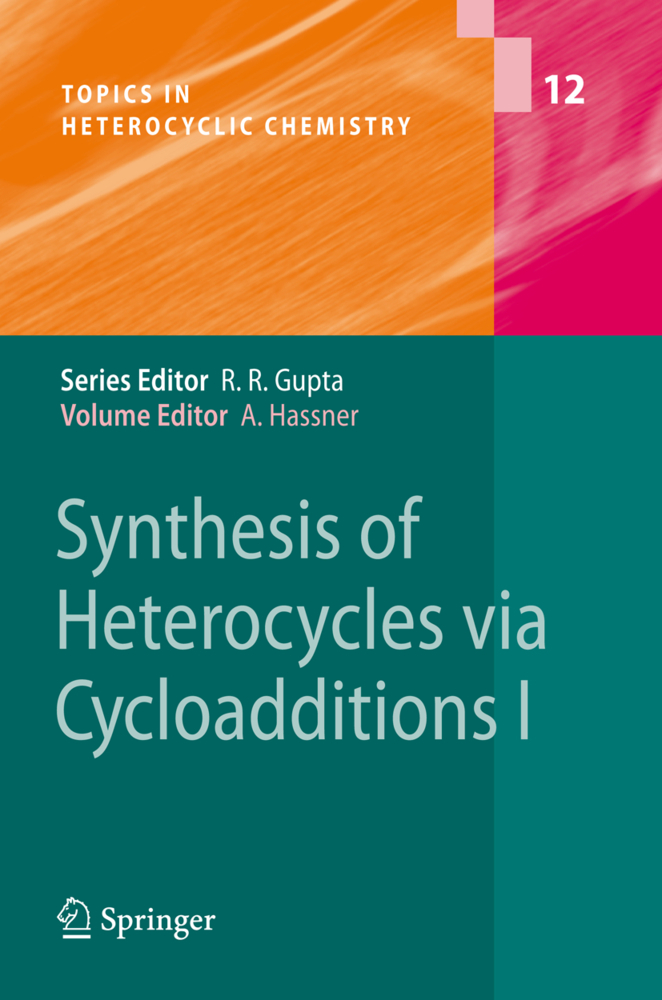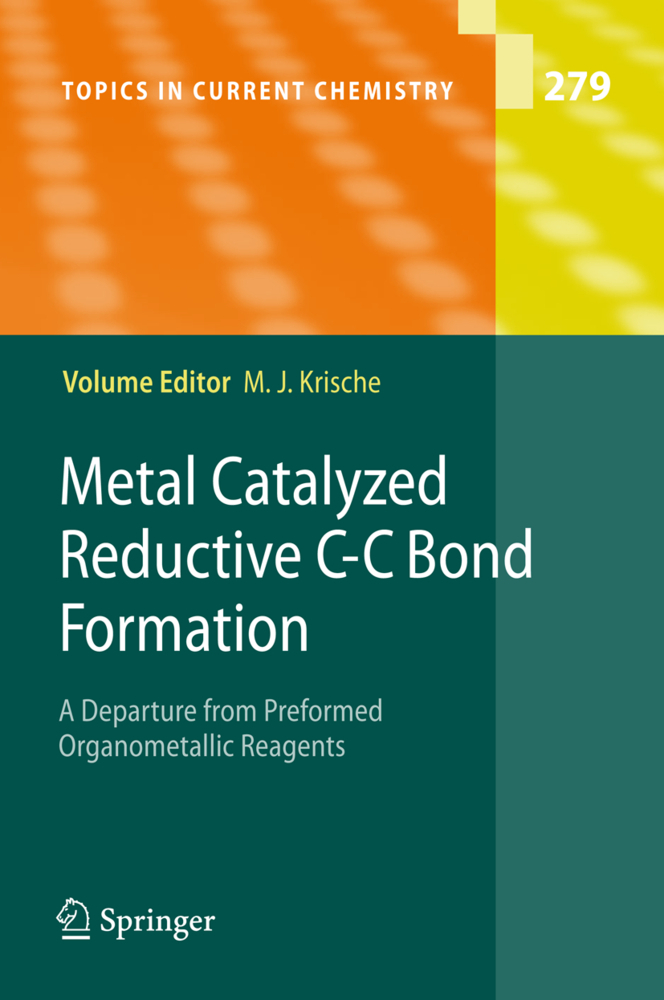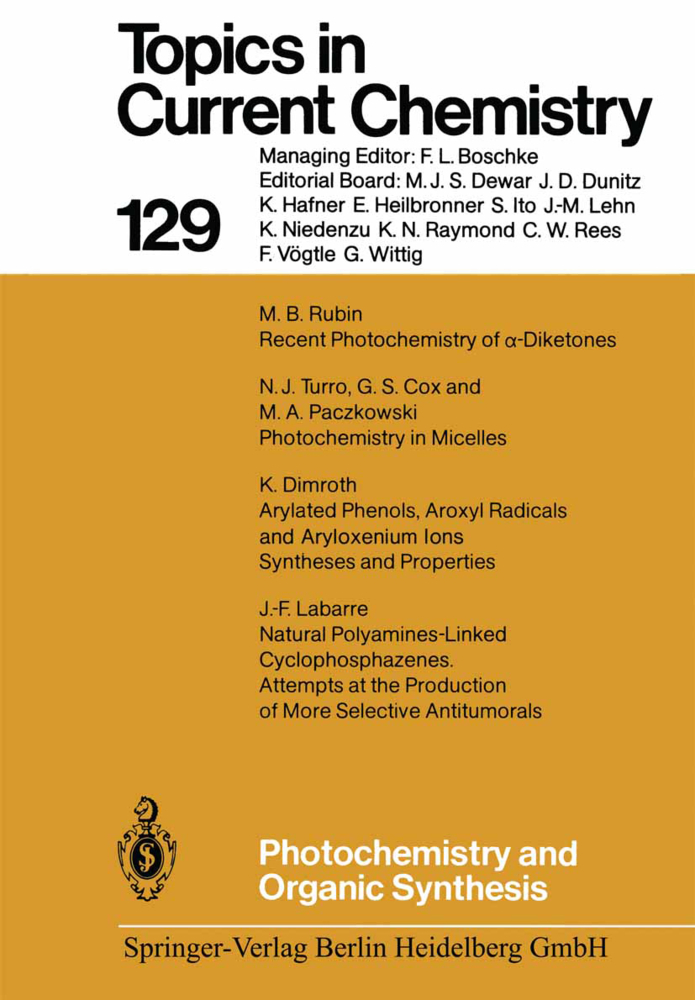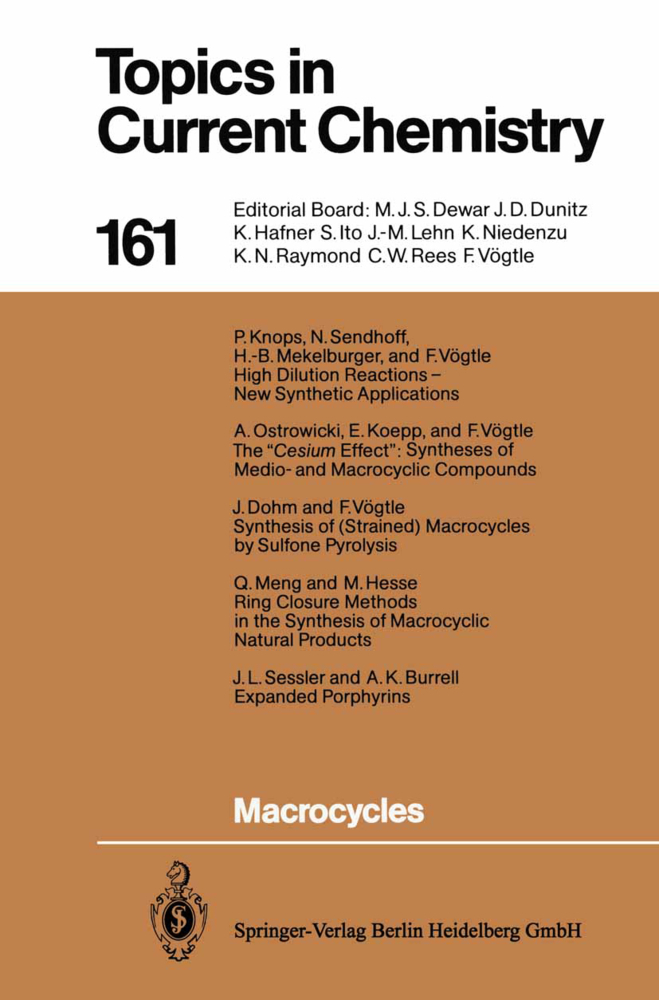Organoselenium Chemistry I
Functional Group Transformations
Organoselenium Chemistry I
Functional Group Transformations
During the last fifteen years organoselenium chemistry underwent a spectacular mutation: from an exotic area of science practised by a few specialists it became a relatively well mastered and widely used methodology of synthetic organic chemistry. The key to this success is that a fair number of selenium based reagents and reactions have been discovered, which are able to perform specific transformations selectively and often under very mild conditions. The aim of this volume is to present the different selenium containing reagents now available to chemists, to mention the scope as well as the limitations of their reactions, and to compare those which possess similar reactivities. The authors present the reagents in the order of increasing oxidation level around the selenium atom.
1.2 Abundance and Distribution of Selenium
1.3 Selenium in Plants
1.4 Selenium Toxicity in Animals
1.5 Enzymic Role of Selenium
1.6 Ecological Aspects of Selenium in Human Health
1.7 Extraction of Selenium
1.8 Industrial Uses of Selenium
1.9 Selenium: Structure, Physical and Chemical Properties
2. Reactions Involving Hydrogen Selenide, Selenols and Related Compounds
2.1 Reactions Involving the Nucleophilicity of Hydrogen Selenide, Selenols and Related Compounds
2.2 Reduction Reactions Involving Hydrogen Selenide, Selenols, Selenocyanates, Triphenylphosphine Selenide and Related Compounds
2.3 Use of Copper (I) Benzeneselenolate
2.4 Reduction of Dienes to Olefins With Dichloro Bis (Diphenyl Selenide) Platinum (II)
3. Reactions Involving Metallic or Amorphous Selenium with Organic Molecules
3.1 Transformation of (Z) Alkenes to Their (E) Isomers
3.2 Oxidation of Cyclic and Poly cyclic Hydrocarbons and Heterocycles to Aromatic Compounds Using Elemental Selenium
3.3 Oxido-reduction Reactions of Hydrocarbons
3.4 Reactions Involving Carbon Monoxide and Catalytic Amounts of Selenium
4. Reactions Involving Selenoxides and Related Derivatives
4.1 Reactions Involving Selenoxides
4.2 Oxidation of Alcohols to Carbonyl Compounds with Dimethylselenide/N-chlorosuccinimide
4.3 Oxidative Conversion of sec-Benzylamines to Imines and Tertiary Benzylamines to Iminium Salts by Diphenylselenium Bis(trifluoroacetate)
5. Reactions Involving Selenenyl Halides and Related Compounds
5.1 Allylic Halogenation of Olefins
5.2 Ring Expansion of 1,3-Dithiolans and 1,3-Dithians
5.3 Oxidation of Alcohols to Carbonyl Compounds
5.4 Synthesis of Oligonucleotides and Nucleoside Phosphoramidates
6. Reactions Involving Benzeneseleninic Anhydride (BSA) and Related Reagents
6.1 Oxidation of Phenols, Pyrocatechols and Hydroquinones
6.2 Dehydrogenation of Ketones to Enones and Dienones
6.3 Dehydrogenation of Lactones and Lactams to ?, ?-Unsaturated Compounds
6.4 Oxidation of Alcohols to Carbonyl Compounds or to Enones and Dienones
6.5 Oxidative Conversion of Thiols to Disulfides, Sulfides to Sulfoxides and of Phosphines to Phosphinoxides
6.6 Oxidation of Amines
6.7 Oxidation of Hydrazines
6.8 Oxidation of Hydroxylamines
6.9 Oxidation of the Alkyl Chain of Aromatic and Heteroaromatic Compounds
6.10 Regeneration of Carbonyl Compounds
6.11 Synthesis of ?-Selenocarbonyl Compounds from BSA and
6.12 Synthesis of Allyl Alcohols from Allyl Silanes
7. Reactions Involving Benzeneseleninyl Halides
7.1 Oxidation of Aldoximes to Nitriles
7.2 Oxidation of Amines
7.3 Dehydrogenation of Carbonyl Compounds to Enones
8. Reactions Involving Perseleninic Acids
8.1 Oxidation of Olefins to Epoxides
8.2 Baeyer-Villiger Type Oxidation of Ketones to Esters and Lactones
8.3 Oxidation of Selenides to Selenoxides and Selenones and of Sulfides to Sulfoxides or Sulfones
9. Selenium Dioxide Oxidations
9.1 Reactivity of SeO2 with Alkenes
9.2 Reactivity of SeO2 Towards Acetylenic Hydrocarbons
9.3 Reactivity of SeO2 with Carbonyl Compounds
9.4 Oxidation of the Alkyl Chain of Aromatic and Heteroaromatic Compounds
9.5 Oxidation of Benzylic and Allylic Alcohols
9.6 Oxidation of Hydrazones, Imines, Oximes and Semicarbazones
9.7 Conversion of Thio- and Selenocarbonyl Compounds to Carbonyl Compounds
9.8 Reactions of Nitroalkanes: Synthesis of N-hydroxy Carboxamides and Nitriles
9.9 Synthesis of Olefins from Phosphorus Ylides and Diazoalkanes
9.10 Reaction ofSeO2 with Phosphines, Arsines, Stibines and Related Compounds
9.11 Reaction with Hydrazines
9.12 Reaction with Organometallics
10. Reactions of Imidoselenium Compounds
10.1 With Alkenes and Alkynes: Synthesis of Allylic and Propargylic Amines
10.2 With Dienes: Synthesis of Cis Diaminoalkanes
11. Reactions Involving Selenium Oxychloride and Selenium Tetrahalides
11.1 Reactivity of Selenium Oxychloride
11.2 Reactivity of Selenium Tetrafluoride
11.3 Reactivity of Selenium Tetrachloride
References.
1. Introduction
1.1 Historical Review1.2 Abundance and Distribution of Selenium
1.3 Selenium in Plants
1.4 Selenium Toxicity in Animals
1.5 Enzymic Role of Selenium
1.6 Ecological Aspects of Selenium in Human Health
1.7 Extraction of Selenium
1.8 Industrial Uses of Selenium
1.9 Selenium: Structure, Physical and Chemical Properties
2. Reactions Involving Hydrogen Selenide, Selenols and Related Compounds
2.1 Reactions Involving the Nucleophilicity of Hydrogen Selenide, Selenols and Related Compounds
2.2 Reduction Reactions Involving Hydrogen Selenide, Selenols, Selenocyanates, Triphenylphosphine Selenide and Related Compounds
2.3 Use of Copper (I) Benzeneselenolate
2.4 Reduction of Dienes to Olefins With Dichloro Bis (Diphenyl Selenide) Platinum (II)
3. Reactions Involving Metallic or Amorphous Selenium with Organic Molecules
3.1 Transformation of (Z) Alkenes to Their (E) Isomers
3.2 Oxidation of Cyclic and Poly cyclic Hydrocarbons and Heterocycles to Aromatic Compounds Using Elemental Selenium
3.3 Oxido-reduction Reactions of Hydrocarbons
3.4 Reactions Involving Carbon Monoxide and Catalytic Amounts of Selenium
4. Reactions Involving Selenoxides and Related Derivatives
4.1 Reactions Involving Selenoxides
4.2 Oxidation of Alcohols to Carbonyl Compounds with Dimethylselenide/N-chlorosuccinimide
4.3 Oxidative Conversion of sec-Benzylamines to Imines and Tertiary Benzylamines to Iminium Salts by Diphenylselenium Bis(trifluoroacetate)
5. Reactions Involving Selenenyl Halides and Related Compounds
5.1 Allylic Halogenation of Olefins
5.2 Ring Expansion of 1,3-Dithiolans and 1,3-Dithians
5.3 Oxidation of Alcohols to Carbonyl Compounds
5.4 Synthesis of Oligonucleotides and Nucleoside Phosphoramidates
6. Reactions Involving Benzeneseleninic Anhydride (BSA) and Related Reagents
6.1 Oxidation of Phenols, Pyrocatechols and Hydroquinones
6.2 Dehydrogenation of Ketones to Enones and Dienones
6.3 Dehydrogenation of Lactones and Lactams to ?, ?-Unsaturated Compounds
6.4 Oxidation of Alcohols to Carbonyl Compounds or to Enones and Dienones
6.5 Oxidative Conversion of Thiols to Disulfides, Sulfides to Sulfoxides and of Phosphines to Phosphinoxides
6.6 Oxidation of Amines
6.7 Oxidation of Hydrazines
6.8 Oxidation of Hydroxylamines
6.9 Oxidation of the Alkyl Chain of Aromatic and Heteroaromatic Compounds
6.10 Regeneration of Carbonyl Compounds
6.11 Synthesis of ?-Selenocarbonyl Compounds from BSA and
6.12 Synthesis of Allyl Alcohols from Allyl Silanes
7. Reactions Involving Benzeneseleninyl Halides
7.1 Oxidation of Aldoximes to Nitriles
7.2 Oxidation of Amines
7.3 Dehydrogenation of Carbonyl Compounds to Enones
8. Reactions Involving Perseleninic Acids
8.1 Oxidation of Olefins to Epoxides
8.2 Baeyer-Villiger Type Oxidation of Ketones to Esters and Lactones
8.3 Oxidation of Selenides to Selenoxides and Selenones and of Sulfides to Sulfoxides or Sulfones
9. Selenium Dioxide Oxidations
9.1 Reactivity of SeO2 with Alkenes
9.2 Reactivity of SeO2 Towards Acetylenic Hydrocarbons
9.3 Reactivity of SeO2 with Carbonyl Compounds
9.4 Oxidation of the Alkyl Chain of Aromatic and Heteroaromatic Compounds
9.5 Oxidation of Benzylic and Allylic Alcohols
9.6 Oxidation of Hydrazones, Imines, Oximes and Semicarbazones
9.7 Conversion of Thio- and Selenocarbonyl Compounds to Carbonyl Compounds
9.8 Reactions of Nitroalkanes: Synthesis of N-hydroxy Carboxamides and Nitriles
9.9 Synthesis of Olefins from Phosphorus Ylides and Diazoalkanes
9.10 Reaction ofSeO2 with Phosphines, Arsines, Stibines and Related Compounds
9.11 Reaction with Hydrazines
9.12 Reaction with Organometallics
10. Reactions of Imidoselenium Compounds
10.1 With Alkenes and Alkynes: Synthesis of Allylic and Propargylic Amines
10.2 With Dienes: Synthesis of Cis Diaminoalkanes
11. Reactions Involving Selenium Oxychloride and Selenium Tetrahalides
11.1 Reactivity of Selenium Oxychloride
11.2 Reactivity of Selenium Tetrafluoride
11.3 Reactivity of Selenium Tetrachloride
References.
| ISBN | 978-3-642-73243-0 |
|---|---|
| Artikelnummer | 9783642732430 |
| Medientyp | Buch |
| Auflage | Softcover reprint of the original 1st ed. 1988 |
| Copyrightjahr | 2011 |
| Verlag | Springer, Berlin |
| Umfang | XI, 221 Seiten |
| Abbildungen | XI, 221 p. |
| Sprache | Englisch |

